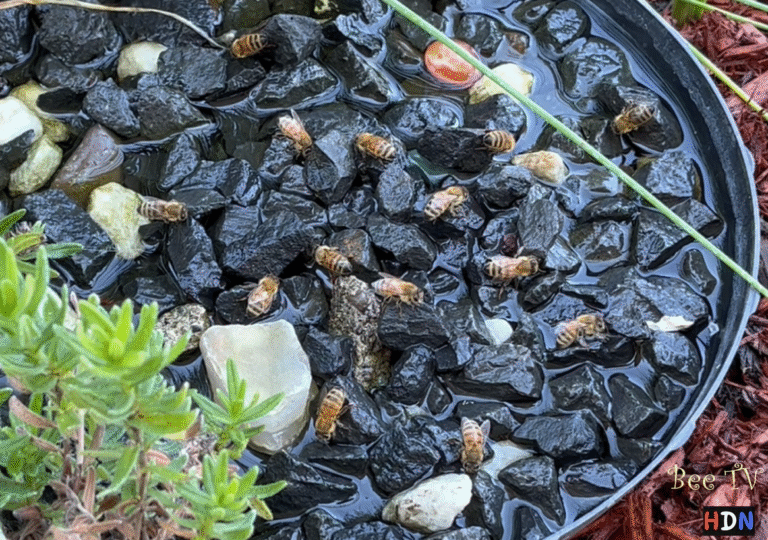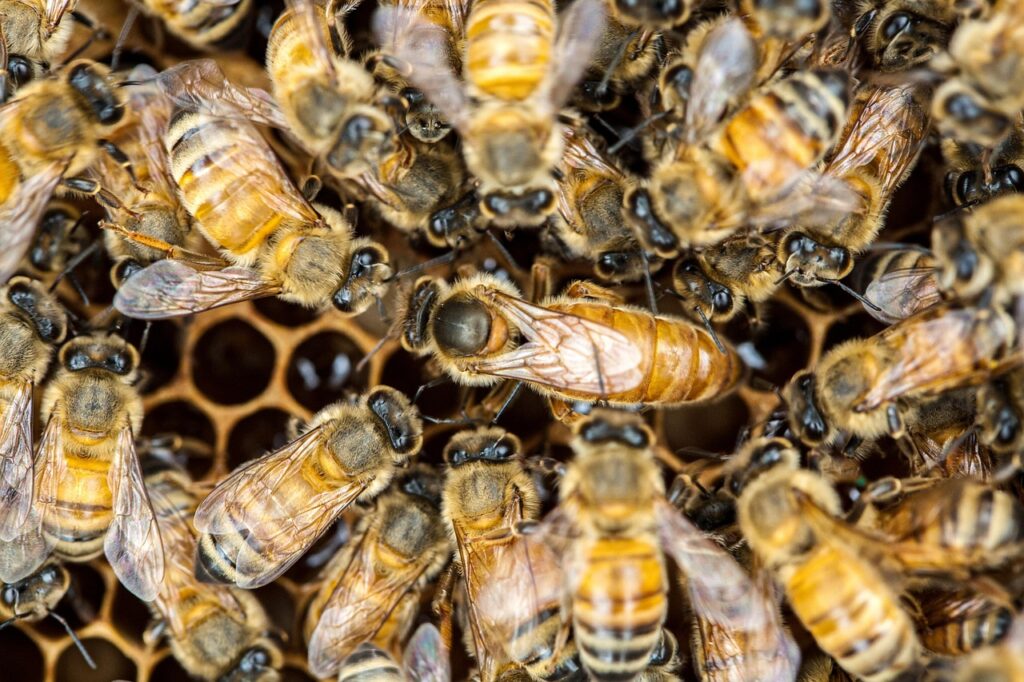Ever wonder how bees locate the best water sources in their environment?
Bees primarily use their highly developed sense of smell to locate the best water sources in their environment.
They are attracted to water that carries distinct odors—such as those from mud, moss, algae, minerals, or even chlorine—rather than relying on visual cues alone.
Scented or “dirty” water sources (e.g., puddles, pond edges, compost seepage) are often preferred because they not only emit stronger odors that bees can detect, but also provide additional nutrients and minerals the colony may need[1][2][3][4].
Key methods bees use to find water include:
• Olfactory cues: Bees use odor receptors on their antennae and feet to detect water that has a strong or distinctive smell. Water sources rich in minerals, algae, or even animal traces emit odors that guide bees to them. Clean, clear water is less attractive unless it picks up a scent from its surroundings[1][3][4].
• Preference for nutrient-rich water: Bees often seek out water containing sodium, magnesium, and other minerals, especially when the hive diet is deficient in these nutrients. The preference can shift based on colony needs, such as sodium in spring and other ions in fall[2][5].
• Memory and site fidelity: Bees learn and remember the locations of reliable water sources. Once a bee discovers a suitable site, it will continue to return and may recruit other foragers to the exact spot using communication signals in the hive (such as the waggle dance)[5][6].
• Visual cues (secondary role): While bees see well for flowers, they have difficulty identifying water sources visually because water itself lacks color and contrast. However, they may notice gleaming surfaces or wet patches on the ground, especially when combined with odors[3].
• Social recruitment: Bees can communicate the location of good water sources to nestmates via trophallaxis (sharing a sample in the hive) and perform a waggle dance to indicate distance and direction when water is in high demand[5].
• Proximity to the hive: Bees prefer water sources that are close by (generally within a few hundred meters) to minimize energy expenditure and time out of the hive[2].
In summary, bees rely mainly on scent (seeking out odor-rich, naturally “dirty” water), supported by site memory and hive communication, in order to consistently locate and exploit the best water sources their environment can provide[1][2][3][4].
⁂
1. https://backyardbeekeeping.iamcountryside.com/health-pests/creating-the-best-water-sources-for-bees/
2. https://www.ctbees.org/post/water-foraging-by-honey-bees
3. https://www.honeybeesuite.com/bees-and-water-the-ladies-drink-for-free/
4. https://www.honeybeesuite.com/water-sources-for-bees/
5. https://ucanr.edu/blog/bee-gardener/article/bees-need-water-establish-water-sources-late-winter-keep-them-out-pool
6. https://americanbeejournal.com/summer-heat-bees-need-water-tips-providing-colony-collects-distributes/



